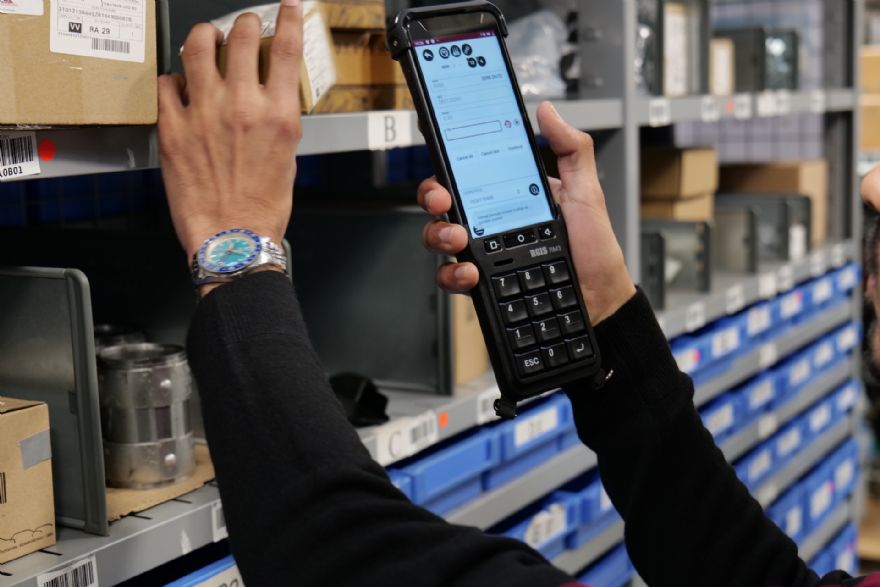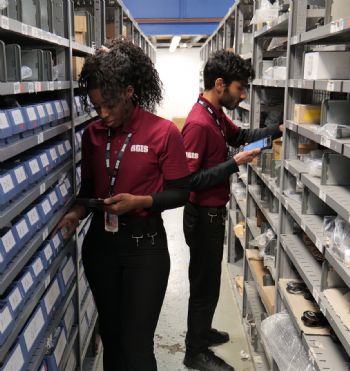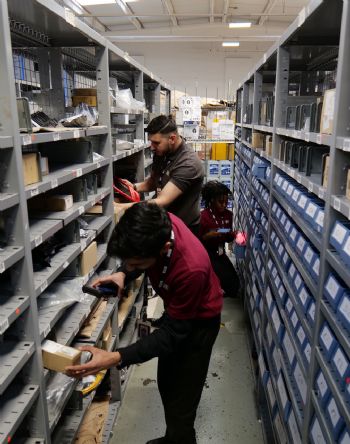
Across almost all aspects of manufacturing, businesses are eliminating paperwork and introducing data-driven processes to boost efficiencies — are you missing a trick with your annual stock-take?
In this article, Kiran Soni (pictured below), managing director of inventory management specialist RGIS, explains how to calculate the hidden costs of an in-house stock-take; the challenges around continued reliance on pen-and-paper inventory management; and how to overcome technological barriers to accurate stock counts.

Mr Soni said: “The annual stock-take is often a source of workforce grumbling, viewed as a necessary chore. But it also might be costing you a lot more than you realise. As with any other aspect of manufacturing, we need to fully understand this issue before we can make an informed decision on how to address it. Questions to consider include how much human resource it requires, whether it diverts resources from other areas of the business, and what impact that has on your bottom line.
“When calculating the hidden costs of an in-house stock-take, it is important to account for all factors. The first question to consider is, how much human resource is required? This will vary significantly depending on the size and complexity of the warehouse. For example, a small operation might only have a few hundred stock-keeping units (SKUs), whereas a more complex or larger company can easily keep more than 10,000 SKUs on the shelves. To complete an inventory check successfully, you need people to manually count parts, others to collate the information and someone to compare the findings with your inventory records.”
He continued: “Often, the warehouse team cannot manage a full stock-take on their own, meaning you have to bring in people from the production cells or assembly lines; or office staff from departments such as purchasing and accounts. If considering this approach, there are two ways you should measure these costs.
“Firstly, how much does it cost to pay a production or office worker to carry out an inventory check? Secondly, what impact does diverting these people away from their day jobs have on productivity and efficiency – even on sales targets? Even if you schedule a stock-take to coincide with an annual shutdown, there is still a cost involved. You are paying workers to come in while the rest of the team are on annual leave.”

Mr Soni added: “The third question is harder to quantify, but is equally important: are those workers taking part in the stock-take capable and motivated? Disgruntled colleagues from the assembly lines will be less effective, taking longer to complete tasks. Similarly, those with little experience of inventory checks have a higher risk of making mistakes which will impact the accuracy of your results. For example, not everyone in the stock-take team may have the expertise to identify a damaged or mislabelled part.”
He explained: “Many manufacturing facilities still rely on pen-and-paper inventory management. Of course, they keep digital records of inventory, such as spreadsheets; but the stock take itself is still recorded the old-fashioned way. This presents a further risk of inaccurate results, as written records of stocktakes are open to human error during the count as well as transposing the data into a digital format. It is very easy to make a mistake when inputting data if the person responsible is tired, distracted or simply not experienced in this task.
“Above all, manually recording the data requires a significant amount of resource – this is a problem at which you have to throw a lot of bodies. It can lead to inefficient counting techniques, meaning the actual counting of SKUs takes a lot longer and it can make the reconciliation process a nightmare. Working out the size, scale and location of discrepancies between the count and the inventory records can be a laborious exercise that is also at risk of the same human errors. In addition, you can only understand issues on variances after the fact. In a pen-and-paper stock-take, there is no mechanism by which management can gain oversight and insight until the entire process is complete. This can delay the speed of decision-making and cause problems further down the line.”
Inherent risksMr Soni suggests one way to ensure better results is to implement a barcode system. These are of course common in retail but less so in manufacturing, and while introducing barcodes for all SKUs can significantly improve the speed and accuracy of a stock-take, there are significant downsides. Rolling out a barcode system across the entire warehouse requires a huge investment in time and money. It requires the diversion from day jobs described above, along with all the inherent risks from using inexperienced or unmotivated workers and requires a pause in production that comes at a price.
Mr Soni said: “However, there is a third way to avoid all these costs and challenges – outsourcing the annual stock-take to a third party. Inventory management specialists such as
RGIS can help companies make significant savings on stock-takes. Put simply, trained, experienced auditors work faster, meaning they can complete a stock check in far fewer days than it would otherwise take, and because they are veryn experienced, they are less likely to make mistakes.

In addition, breakthroughs in technology mean that some providers can now offer the speed and accuracy of a stock-take using a barcode system without the cost and hassle of implementing barcodes.
‘RGIS Vision’ is an advanced industrial solution that goes beyond barcode scanning to speed up stock-taking and inventory checks by eliminating paperwork and manual data entry. It can scan part numbers, product codes and barcodes, enabling auditors to achieve faster and more accurate results than a manual in-house stock take. It uses pioneering camera handset technology to capture part numbers, QR codes and product codes as well as barcodes – and it can even read smudged, faded or blurred part numbers. The cloud-based system creates a data file that can be imported into any system or spreadsheet, alleviating what can sometimes be hours of manual data entry, and significantly reducing the need to manually correct line-item variances on an inventory tracker.
In the past, managers could only complete the variance checks once they had collated all the paperwork from a stock-take. Using RGIS Vision means that the auditors can send management a line-by-line variance report as it completes the count on each parts bin. This saves a significant amount of administrative time after the stock-take; and also provides quicker insights.
Mr Soni concluded: “
RGIS is a global leader in inventory management solutions, providing outsourced stock-taking services which save its clients time and money. Established in the retail industry for over 65 years, the company now also serves a growing base of industrial and manufacturing clients, thanks to its innovative RGIS Vision technology. Our experts and resources can help you complete any industrial stocktake or supply chain audit, including wall-to-wall counts and delivery checks.”
For further details on how
RGIS can help manufacturing and industrial facilities save time and money on stock checks, visit the website
here.